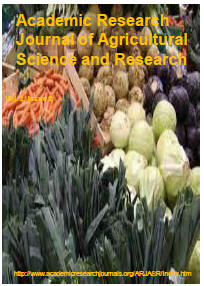| ARJASR |
Academic Research Journal of
Agricultural Science and Research |
||||||||||||||||||||||
|
Academic Research Journal of Agricultural Science and Research Vol. 2(1), pp. 6-21, April, 2014. DOI: 10.14662/ARJASR2014.011. ISSN: 2360-7874 ©2014 Academic Research Journals Full Length Research Effect of different maize (Zea mays L.) soybean (Glycine max (L.) Merrill) intercropping patterns on yields, light interception and leaf area index in Embu West and Tigania East sub counties Abstract
Jossias Mateus Materusse Matusso1*, Jayne Njeri Mugwe2, Monicah Mucheru-Muna3
1*International Crops Research Institute for the Semi-Arid Tropic, P. O. Box 1906, Maputo, Mozambique. 2Department of Agricultural Resource Management, School of Agriculture and Enterprise Development, Kenyatta University (KU), Nairobi, P. O. BOX 43844 00100, Kenya 3Department of Environmental Science, School of Environmental Studies, Kenyatta University (KU), Nairobi, P. O. BOX 43844 00100, Kenya 1*Corresponding Authors Email address: matujossias@gmail.com
Accepted 13 April 2014
Field trials were
conducted at the field units of the Embu Agricultural Training
Center and Kamujine Dispensary in Embu and Meru Counties, Kenya,
during 2012 long rain (LR) and short rain (SR) seasons to determine
the effects of different maize-soybean intercropping patterns on
yields, light interception and leaf area index. The main treatments
were four maize soybean intercropping patterns
(convencional-1maize:1soya; MBILI-2maize:2soya; 2maize:4soya;
2maize:6soya) and two sole crops of maize and soybean, respectively.
The experimental design was a randomized complete block design with
four replications, and plot size of 7.0 m by 4.5 m. The results
showed that the maize-soybean intercropping patterns had significant
effect on maize stover and grain yields during both seasons and
sites. The MBILI treatment recorded significantly higher stover and
grain yields than all other treatments. During the long rain 2012,
the soybean yields were reduced by 60 and 81% due to the
intercropping with maize, at Embu and Kamujine, respectively;
whereas during the 2012 SR, the yields were reduced by 52 and 78% as
effect of intercropping with maize at Embu and Kamujine sites,
respectively. The intercropping patterns affected significantly
(p<0.0001) the photosynthetically active radiation intercepted and
the leaf area index at both sites. From the results of this study,
the use of MBILI maize-soybean intercropping pattern can be
recommended to the farmers of central highlands of Kenya because it
gave efficient resources use and higher yields.
|
|
|||||||||||||||||||||
